A particular classification of camera always elicits a nod of understanding; these are cameras with a mark of quality and precision. Names like Rollei, Hasselblad, Zeiss, and of course, Leica. Although through my work on this review, I have often found that not all Leica’s are treated with the same equal respect, and among many of the more snobbish Leica collectors and users, the M4-2 and M4-P are the ones that are seen as the redhead cousins of the classic M-Series of rangefinders. These cameras indeed hold a much higher space in my mind because of their historical significance in Leica history and Canadian history, for that matter. Yes, both these M4 variants were produced here in Ontario, Canada and are often viewed as helping save the M-Series of rangefinders. Thanks to Rob Roy for loaning this stunning camera out for a review.
Camera Specifications
Make: Ernst Leitz GmBH
Model: Leica M4-P
Type: Rangefinder
Format: 135 (35mm), 36x24mm
Lens: Interchangable, M-Mount
Shutter: Focal Plane Horizonal Travel Shutter, 1s – 1/1000s + Bulb
Dimensions (WxHxD): 147 x 79 x 35mm
Weight: 542g (w/o lens or external meter)
Year of Manufacture: 1980-1986
Background
Leica Camera AG (as the company is now known since 1986) has its start in Wetzlar, Germany. Noted mechanic and mathematician Carl Kellner calculated and formulated an improved optical construction for microscopes. Kellner founded Kellner’s Opticshe Institute in 1849 to build microscopes using his improved formula. Kellner’s company produced microscopes that provided better optical rendering with near-true 1:1 magnification with no distortion. Following Kellner’s death, his widow continued to run the company and hired a young Ernst Leitz in 1865 as a mechanic; by 1869, Letiz ran the firm and renamed the company to Ernst Leitz GmbH. Leitz continued the production of quality microscopes but got a tip about a young employee at Carl Zeiss who felt his skills were not being fully appreciated; Leitz hired Oskar Barnack in 1911. Barnack quickly rose to become chief of research and development and used his position to begin developing a small side project. Barnack, an avid photographer, loved to hike through the German Alps but could not go as far or as long as he liked due to his asthma and the weight of the day’s cameras. He began developing a small fixed-lens camera that used cine film (35mm). The development of this new camera started in 1914, but the start of the Great War (World War One) interrupted the process, which Barnack picked up at the end of the war. Despite the crushing economic reality, the prototype Leitz Cameras, or Ur-Leica, were finished by 1923. The small twenty-five-camera run met with near-instant success. The Leica went into full production in 1924; it featured a fixed lens, the film was loaded from the bottom, and composition was achieved by using a viewfinder. The ability to change lenses came in 1930, and further improvements to production resulted in the Leica Standard by 1932. That same year, the Leica II (the Leica Standard, now retconned to the Leica I) saw the addition of a rangefinder to focus, using a double window system, one window for the rangefinder and the other for a viewfinder. The Leica II proved popular enough that Ernst Leitz’s factory upgraded Leica I owners to convert them to a Leica II. In 1933 the Leica III was introduced, which added slow shutter speeds by adding a second shutter speed dial. The IIIa in 1935 added a top speed of 1/1000s, and 1938’s IIIb moved the viewfinder and rangefinder windows closer together. Ernst Leitz II had succeeded his father following his death and began to see a shift in the air by the decade’s end. The rise of nationalism, fuelled by major economic problems and the fires of discontent, was fanned by Adolf Hitler and a circle of far-right-leaning men and followers. Leitz actively tried to campaign against Hitler and the far-right. When anti-jewish propaganda began circulating, he began to listen to the concerns of his employees. He began relocating many employees and their families of Jewish roots to other offices outside of Germany, mainly to the United States. Family members who could not find work were hired by Leitz and paid a small salary until work in their field could be found. They also got a Leica Camera. Of course, this all ended when Nazi Germany invaded Poland. And though the Nazis loved Leica, the feeling was not mutual. Often Leitz continued to resist the regime by smuggling Jews out of the country (with visits by the SS and Secret Police) and ensuring that their workforce, even those who were forced to work as enslaved people, were better treated. The Leica IIIc, IIc, and Ic changed the production method; a single die-cast body was used that changed the camera’s overall size. It was the only camera produced during the war, as much of Leitz’s output was used in the war effort through military optics as part of the nationalisation of the German economy.
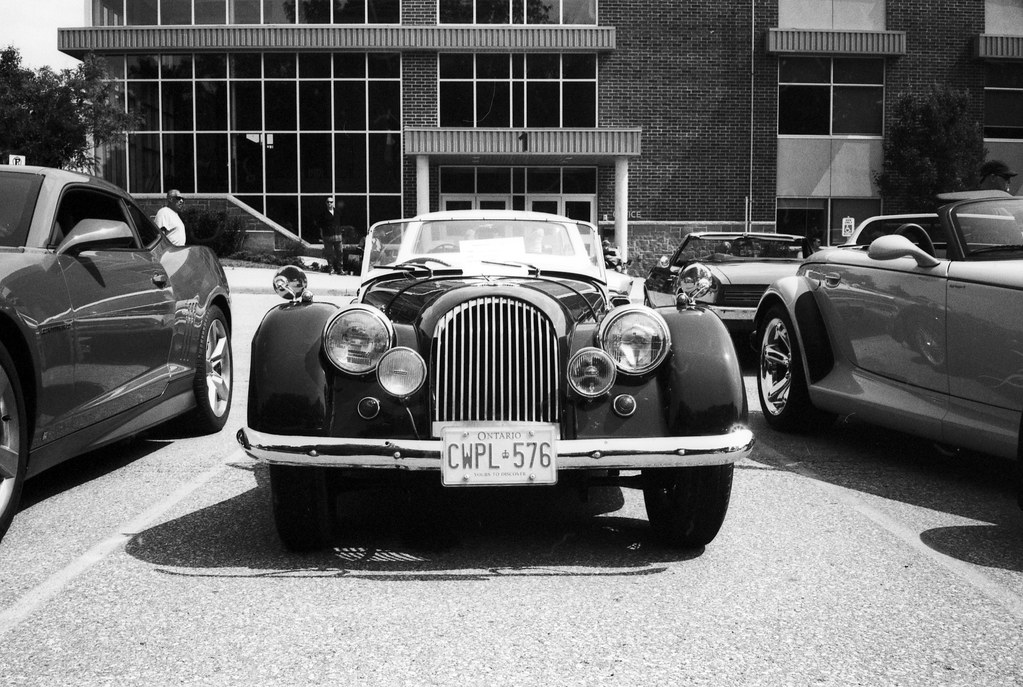
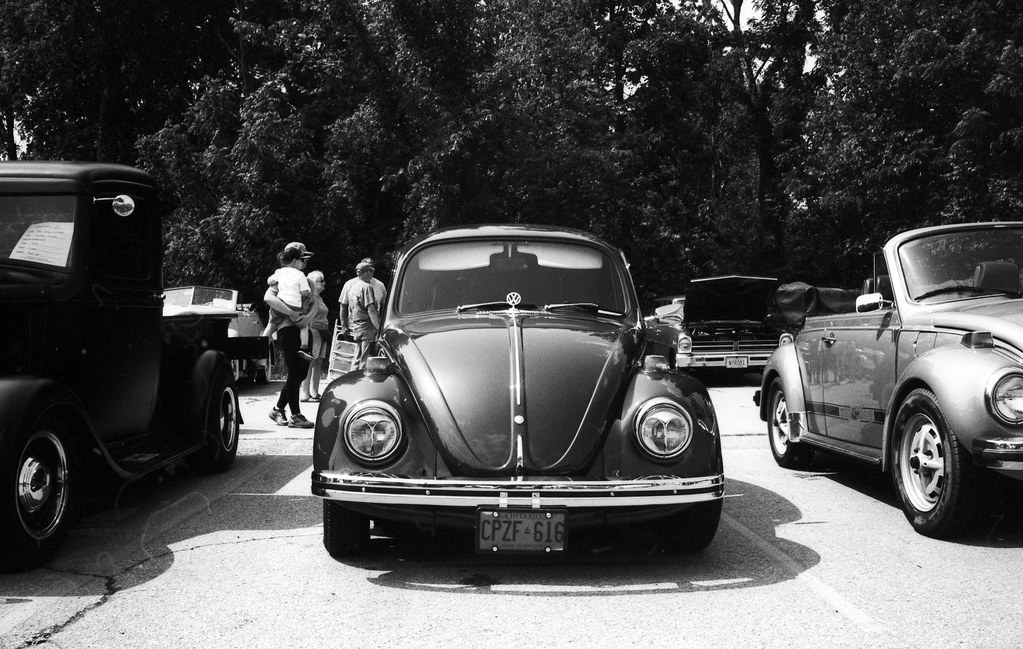
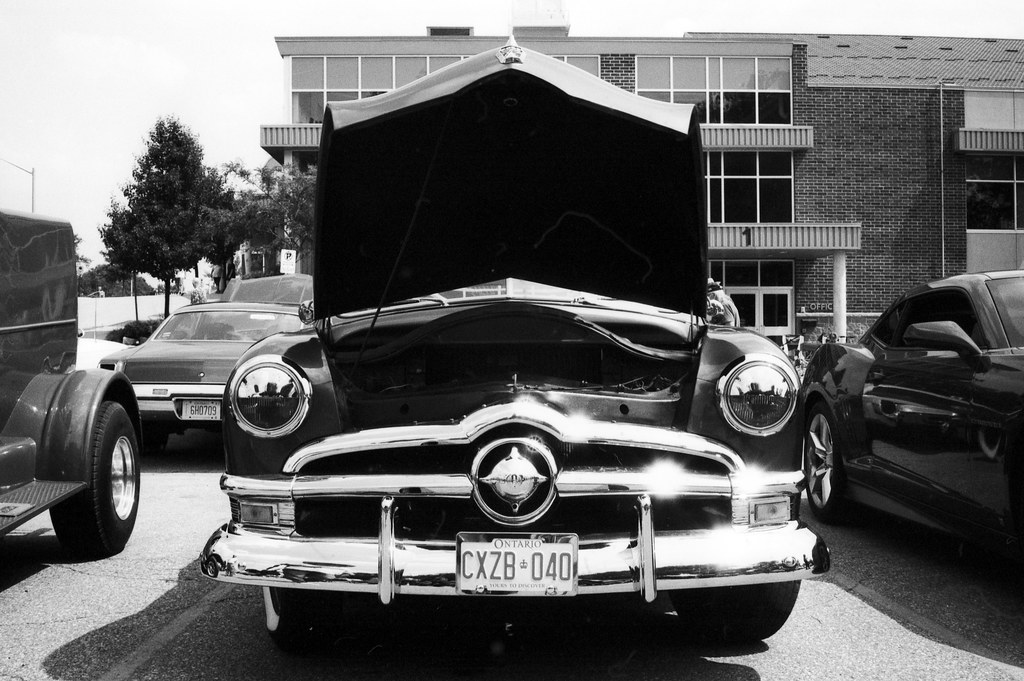

The post-war division of Germany landed Wetzlar in the Allied control zone, and the company worked hard to get back on its feet. Realising that the German domestic market would not have the means to purchase premium cameras, they looked outside the country to survive. Hiring Walter Kulk, his first move was to establish a factory outside the war-ravaged Germany, building an optical coating factory in the Saar Protectorate (under French Control). In 1950 the first post-war camera, the Leica IIIf, added modern flash synchronisation. And while production of the Barnack Leicas continued, the R&D department began to work on a modern rangefinder. There was also the question about another major manufacturing plant located in North America; while the USA was initially considered, wartime restrictions of foreign companies made it impossible. Canada made a good choice, with Granby, Quebec, Smith Falls, Ontario, and Midland, Ontario, as options. Midland, during the war, had been home to a major shipyard, but as the wartime industry wound down, the town’s population found itself lacking a major employer. Midland also had the same number of letters as Wetzlar, and 1952 the new Ernst Leitz Canada factory opened. With cold war tensions rising in Europe, lens production began in Canada, with many notable lens designs being made at Midland. The final entry in the Barnack line of cameras came in 1952 with the IIIg, a self-timer and modern geometric shutter speeds. But in 1954, the newest Leica arrived, the M3. The M3 merged the modern with the legacy, with the same bottom loading as the older cameras and similar rewind knobs. The M3 used a modern film advance leaver (originally a double-stroke to reduce strain on the film, later updated to a single-stroke), a single viewfinder/rangefinder window and, at the centre, a modern lens mount. The new M-Mount used a bayonet system that allowed for faster lens changes. While the M3 lacked an integral meter, a shoe-mounted accessory was produced. A simplified M2 and viewfinder less M1 was also released around the same time. The camera proved to be a smash hit, with 220,000 units sold by the end of production in 1966. Taking the lessons learned, Leitz improved the film loading and take-up spool and changed the rewind to a more common crank with the successor camera, 1967’s M4. The M4 proved another success, but many cameras were starting to integrate metering, so Leitz took a chance and 1971 released the M5. The M5 took the improvements of the M4, changed the body style and added a TTL metering system. While the M5 was not a bad camera, it proved a marketing flop. So much so that Leica considered dropping rangefinders altogether and focusing on SLRs. But with a technology-sharing agreement with Minolta, and a desire to keep their rangefinders going, they decided to reintroduce the M4. But rather than produce the camera in Germany, they decided to send it to Midland. The M4-2 marked a return to the simple manual meterless model of the M-Series. At Midland, 1978’s M4-2 scaled down many internal workings to utilise modern automated production. And while the M4-2 was a near copy of the original M4, several more improvements were made. Released in 1980, the M4-P used the same automated production means but added a nice feature, automatically adjusting frame lines; the M4-P could adjust the composition frame lines for the 28mm, 35mm, 50mm, 75mm, 90mm, and 135mm lenses. And Wetzlar was so impressed by the quality of the M4-P; the same .72 magnification factor viewfinder was used in the Leica M6 and M7. Production of the M4-P ceased in 1986. And while ELCAN continued to produce quality lenses for Leica, today, the plant still operates as a military optical company under the Raytheon name.
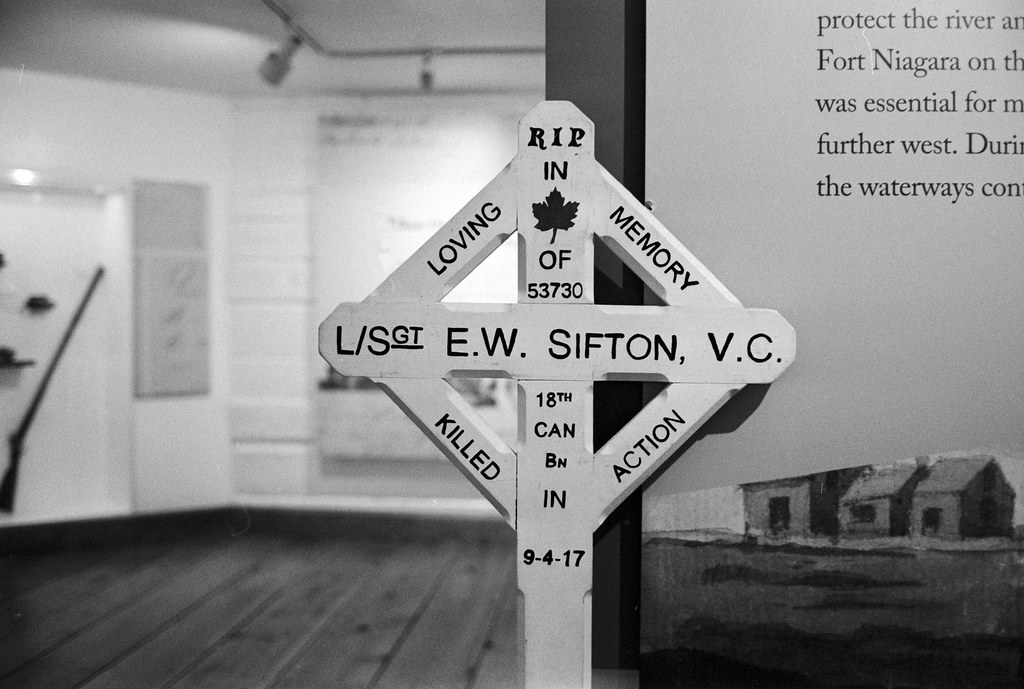
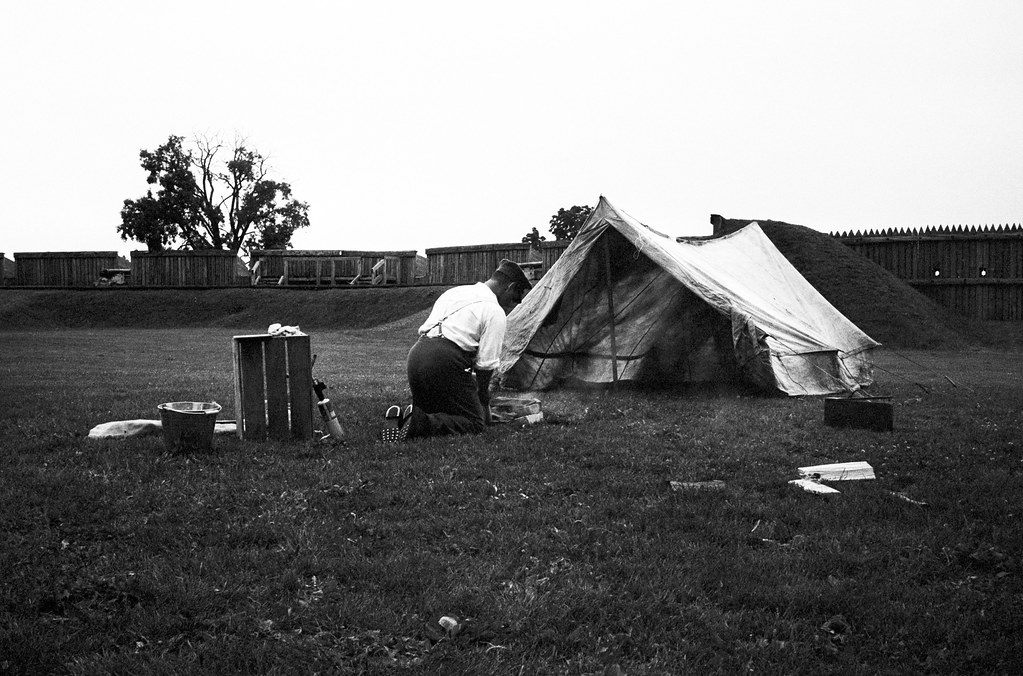


Impressions
You immediately know that the M4-P is a Leica, with that classic silhouette that started with the original M3. The form and function are in perfect balance; this is a camera that is designed for one thing, to take photos and do them with style. The simple rounded body and clean lines present a simple beauty. The all-metal construction is far heavier than I initially expected; this camera is heavy compared to the M6. But not overly heavy to make it difficult to carry around all day, but a good strap is a must. The extra weight would also help balance out the camera when longer or heavier lenses are mounted. The M4-P comes stock in an all-black finish, although some chrome versions are around, including a special 70th-anniversary edition. The camera size is perfect for what it is; nothing extra or special about it. The biggest concern many people have about the Canadian-made Leica’s is that the internal workings are far more straightforward than their German counterparts. This was a cost-saving measure that also allowed for greater automation in the manufacturing process. I would put the build quality and precision equal to the German-made cameras. The controls are simple, with a small shutter speed dial and lovely film advance leaver at the centre and easy to use. And the near-silent shutter and release button still provide enough feedback to know you have shot the frame. The film counter is big and clear, as is the viewfinder. While it has a slight magnification factor (.72), it helps with focusing and composition. My copy has been well-used and is a bit beaten up, but I’m sure it could tell many stories. Besides, I like having a camera that has been used rather than one that is in pristine condition. Despite being a premium camera, they are designed to work.
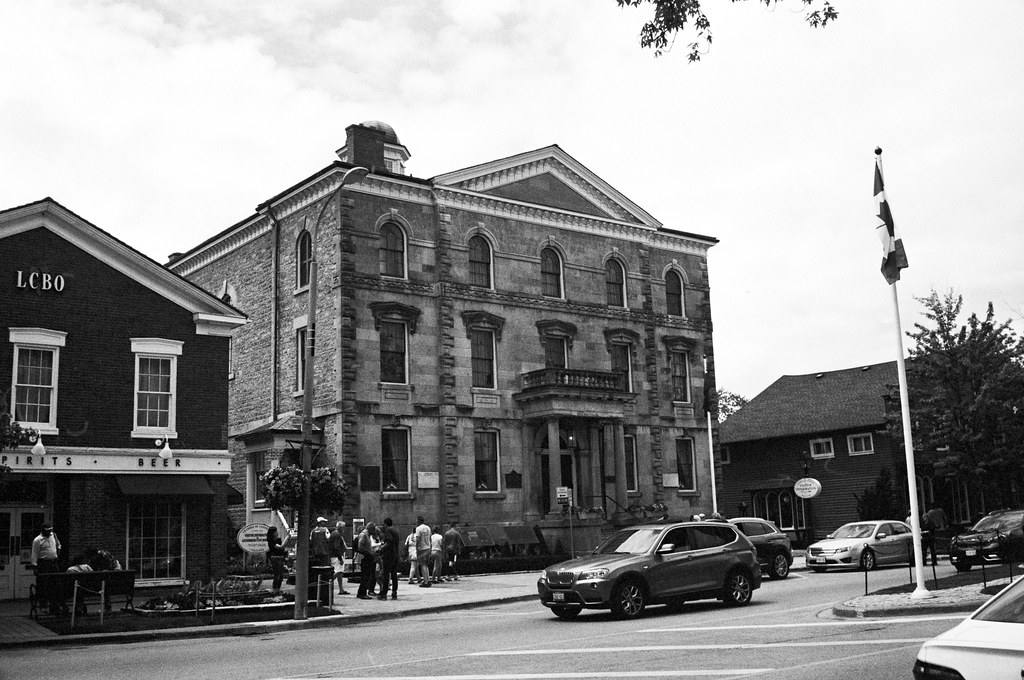
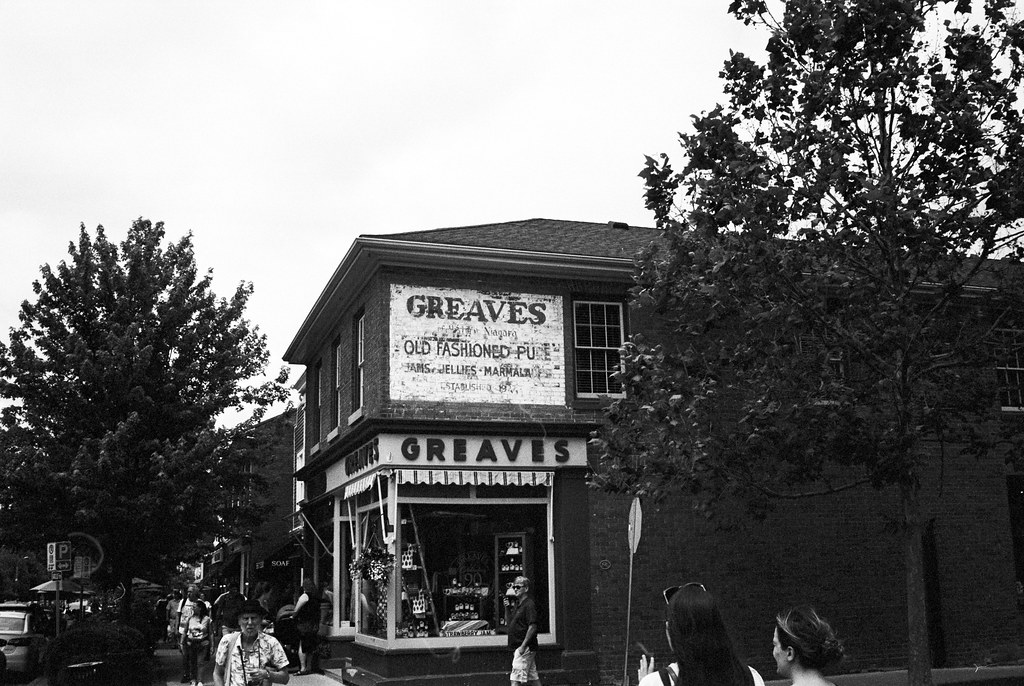

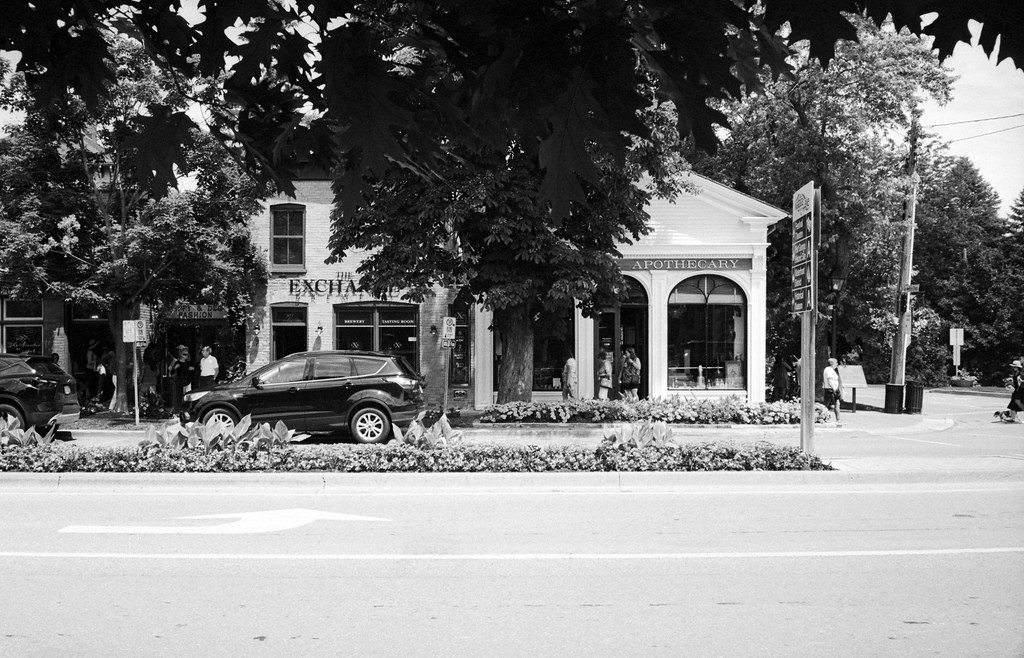
Experiences
The Leica M4-P is both deceptively complex and easy simultaneously. Despite the superficial outward appearance, it is not a camera for the faint of heart and should be treated with dedication and respect. There are no safety interlocks or warnings; the camera will do what you want, right or wrong. As an all-mechanical rangefinder, there is no forgiveness or alarms to prevent blunders. But the one thing that has been improved is film loading. While the camera still uses the legacy bottom loading that was first introduced with the original Leicas, it is not as fickle as the Barnack Leicas; it is easier than manual loading SLRs. Pull the leader out slightly, make sure it catches on the film takeup fork and use the back door to ensure proper transport with a test firing. Then close everything up, making sure that all the seals are engaged. Then cycle things until you get to frame one on the counter. And when you’re ready to shoot, make sure to take that lens cap off. It may seem like a rookie mistake, but even seasoned rangefinder shooters can still forget; I know I have on a couple of other rangefinders I’ve used. And now comes to the fun part; I had no idea how much of a delight the M4-P can be in the field. The weight and balance of the camera are perfect, along with the balance between rough and refined. Enough weight to let you know you have the camera without, but not too much to be a burden. The small size and small lenses make this a great camera for travel or general everyday use. The finder is big and bright with a large rangefinder patch that makes focusing a breeze. There are also excellent frame lines that are laid out and bright. I found these extremely helpful to compose the image and prevent parallax errors. And even when close focusing, they worked like a charm. You don’t have to adjust them manually; the camera does that for you when you mount a lens. These frame lines are doubled up, 28/90mm, 35/135mm, and 50/75mm. The one notable missing focal length is 40mm. And mounting/dismounting the lenses is straightforward and fast, with no tricks or gimmicks required to make it any easier. The shutter speed dial is in the perfect spot and turns quickly with enough feedback for each stop, although there is no display in the viewfinder to indicate the speed. The shutter is nearly silent but enough to know you’ve exposed the frame, and the single-stroke film advance isn’t too far so that you can quickly advance to the next frame. Although speed is a must, the M4-P has integrated motor drive support. The one thing that the M4-P needs is an internal meter, which should continue for you, as there are plenty of options for external meters. Leica produces a dedicated meter for the M4-P, the Leicameter MR-4, that slides onto the hot shoe and even couples with the shutter speed dial. The downside is that it requires a mercury cell or modern Wein cell to power it (odd for a 1980s camera); you could adapt a current cell to power the meter. But my recommendation is to use a contemporary external meter, shoe mounted. You have the trusty Voitlander VCII, ReveniLabs Meter, Hedeco Lime series, TTArtisans, Domo and many more. But the new ReveniLabs Incident handheld meter is the perfect choice for the M4-P and looks good. Of course, there are other options from Gossen, Sekonic, and others. You could even run with Sunny-16 and leave the extra accessories at home. To rewind, flip the toggle at the front of the camera and rewind; the traditional crank makes it a fast process. No matter how you run the M4-P, you’re in for a treat, an experience that, if you’re careful and don’t get cocky, will deliver high-quality images. This precision camera requires you to take your time and demands extra care. But if you do this, you will be satisfied even if 35mm rangefinders aren’t your thing.
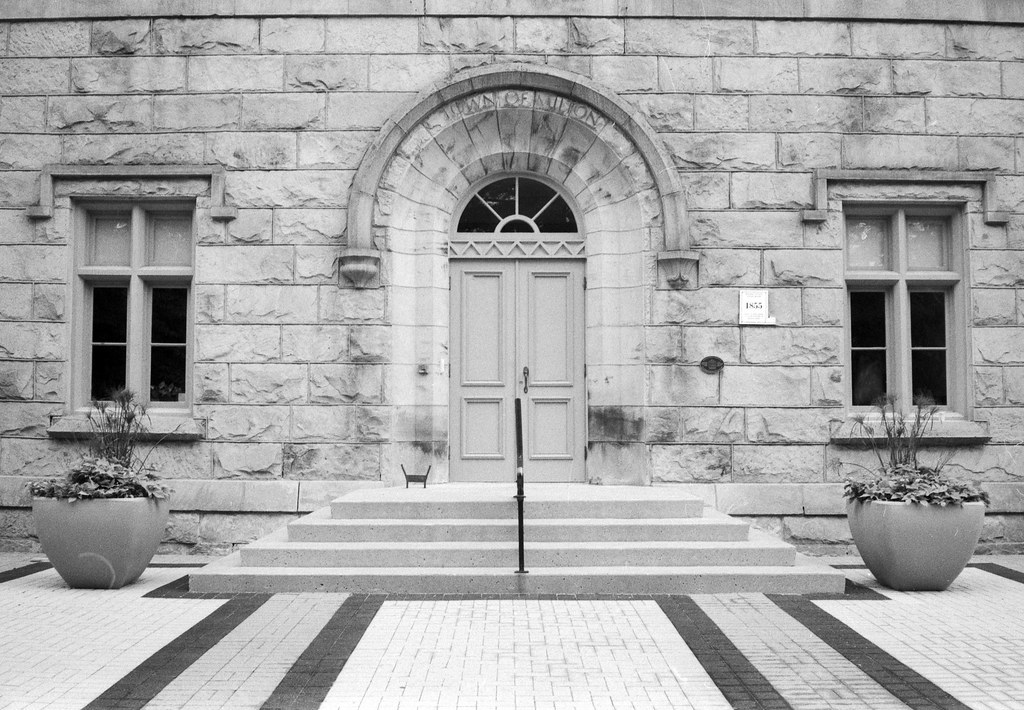


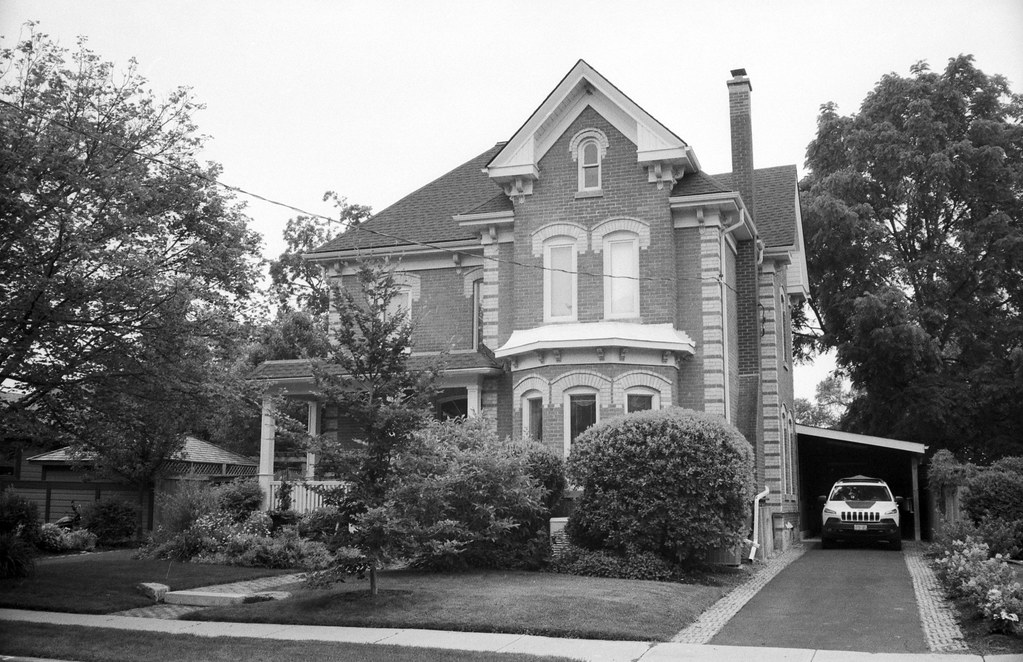
Optics
One of the more controversial opinions regarding using Leicas is the lenses photographers mount on their cameras. The trouble is that while you can sometimes find a good deal on a body, the lenses will always be pricey as the M-Mount is fully backwards and forwards compatible. But some will look down on those who use non-Leitz glass on their Leitz cameras. However, you get what you pay for, and Leitz optics are among the finest and most highly regarded in the photographic world and beyond. But you don’t need to get the fastest and best quality lenses for your M4-P, and starting with simpler lenses with slower apertures may be a way to save some money and get Leitz glass. I do recommend sticking to the supported focal lengths for your frame lines if you’re getting started with rangefinders. Probably the best ones to start with is a 35mm f/2 or 50mm f/2 lens; while not as sexy as the f/1.4 or even faster Noctalux options, these will deliver excellent quality to get you started. Then you can add a 90mm or 135mm and a 28mm lens to round out your kit. And you have access to modern and vintage options, although I would stick to the older lenses and, if you can, find Canadian-made lenses to make a reasonable period match to your M4-P. You can also pick up a Leitz adapter to mount and use older LTM lenses. Some excellent third-party options exist if Leitz Glass is out of your budget. First and foremost would be Carl Zeiss, again a little pricey but will deliver that same build and optical quality. There are also Voigtlander lenses (vintage and modern Cosina built optics), Minolta Rokkor lenses make an excellent choice, and then modern TTArtisan and 7Artisan lenses which are nothing to sneeze at either. Or, if you’re into more experimental options, even Lomography has some M-Mount lenses in its catalogue. There are many vintage LTM/M39 options; I recommend looking at Canon’s rangefinder lenses. Ultimately, the choice is yours; if the non-Leitz glass gives you the desired results, don’t let anyone tell you otherwise. If you’re going to use other focal lengths, many come paired with an auxiliary finder to help with composition, and then you can zone-focus the camera.
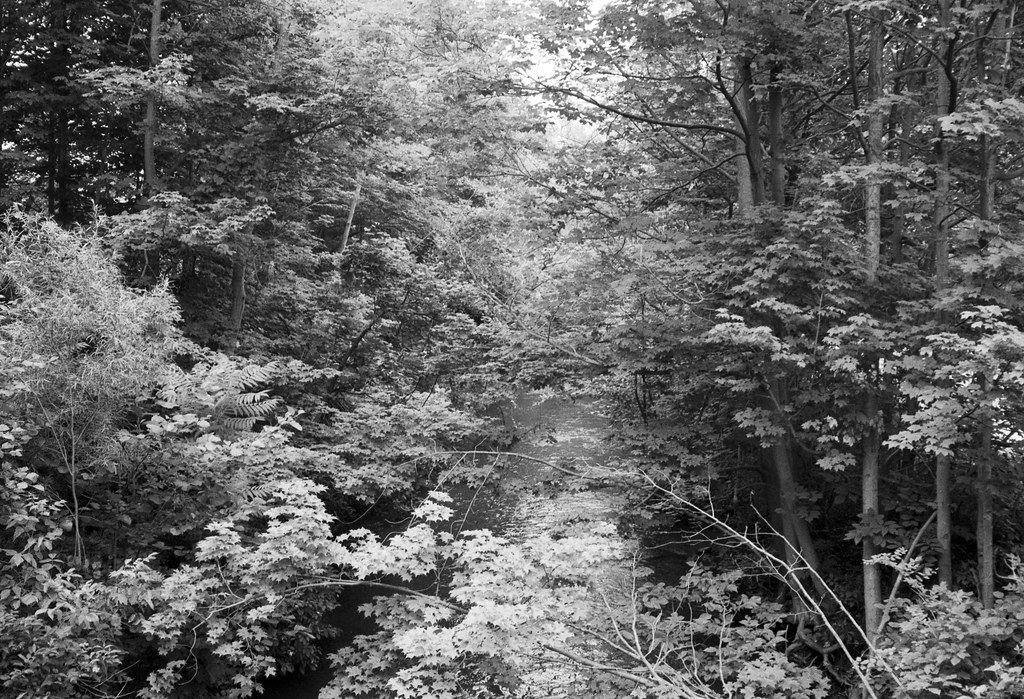



Lowdown
Using the M4-P revived my enjoyment of using 35mm rangefinders, clean in design and functionality. It does one thing well, take photos. And with the right person behind it can provide the needed tool to execute the vision. Of course, this all comes at a cost, and when you have that red dot and Leitz branded across it, expect to pay a premium. On the used market, an M4-P can run between 2,000 and 3,000 dollars (CAD). And that will only get you a body; expect to pay more for a Leitz lens, less if you go with one of the many options on the market. But expect little savings as the m-mount carries a premium cost. So best to budget at least 4,000 for a good kit and lens. And unless you’re into collecting, you don’t have to get an example in perfect cosmetic condition; as long as it is in good working order and you’re a user, get one that’s a little beat up. These cameras are only for some; the full manual, rangefinder, and cost are barriers to picking one up. But suppose you’re someone who likes a bit of history and appreciates a fine camera. In that case, the M4-P will be a perfect entry into the Leica system without having to worry about the frustrations and age of the older Barnacks and the increased cost for the older M3 and newer M6 and beyond cameras. And as much as I enjoyed working with the M4-P, the cost would strip me of almost all the other 35mm systems and more in my tool kit to get something that could fulfil the same ability I have right now in a single system. But if I did have a choice to get an M-Series Leica, it would be a Canadian one.
Further Reading
Don’t just take my word on the Leica M4-P; you can check out the reviews by other awesome camera reviewers!
35mmc – Leica M4-P Review – Function over Mystique
Japan Camera Hunter – Camera Geekery: The JCH Orewell M4-P
Mr. Leica – Detailed Leica M4-P Review
Ken Rockwell – Leica M4-P Review
Aaron Cederberg – I Prefer the Leica M4-P over the Leica M2
Karl-Johan Vogelius – Rolling Evaluation of the Leica M4-P
As a strong believer in symbolisim, the main body of images for this review was shot in Niagara On the Lake at a World War 1 event at Fort George. Which during both World Wars served as a training camp for Canadian soldiers who were headed overseas. Rangefinders, like the Leica, along with high-speed films, were the staple of many combat photographers.
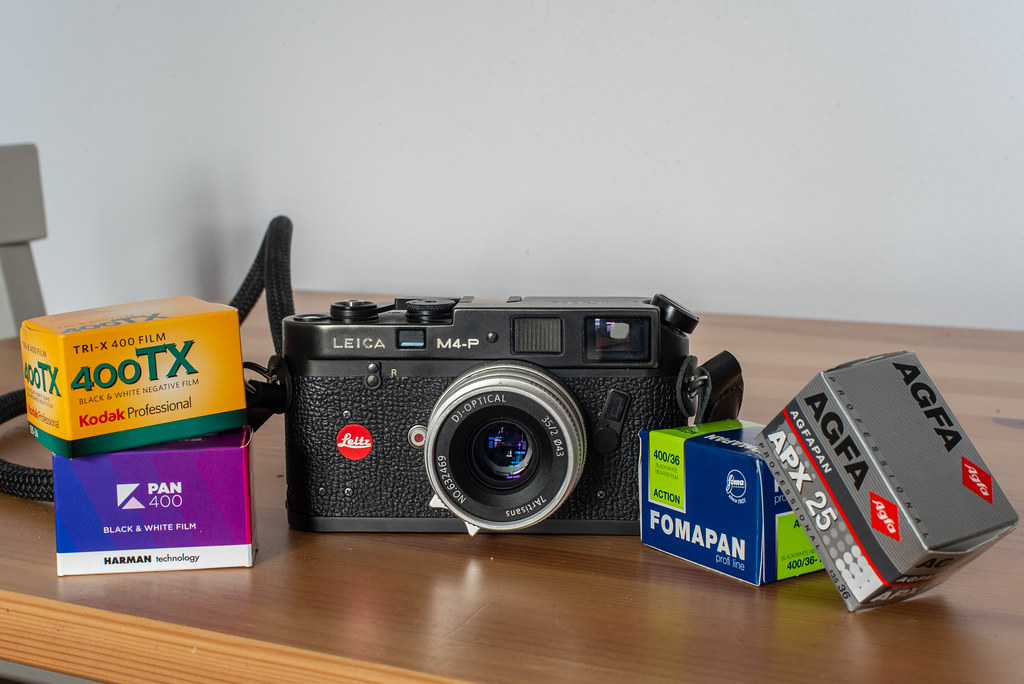

Glad you enjoyed the M4-P, Alex! That 7Artisans lens doesn’t seem too bad either! A couple notes:
To clarify, the framelines in all M’s come up automatically but the M4-P was the first to get the full range of 28 to 135mm framelines (adding 28 and 75) as you mention. Some will say this creates a cluttered viewfinder but for serious use, most will want a full compliment of lines. And with only two sets of framelines up at a time, I don’t find them problematic!
You might be curious to learn that the black finish is also chrome! The M4-P has either a zinc or brass top and brass bottom, all of which are coated in nickel and then black chrome is applied as the final, outward finish. The conventional chrome is referred to as “silver chrome.”
Not only did the exterior move away from brass, so did the internal workings as you touched upon. Steel was used to reduce costs but also because steel can stand up to a motor drive (as you mention later) and harder professional use. Steel is heavier than brass and contributes to the weight gain you noticed.
The move away from brass is another reason purists don’t like these bodies (besides being made in Canada.)
The points above, however contribute to why Leica considered this model the P=Professional version of the M4
Hi Alex. Love your reviews and postings…..but…..you might think about trying to separate out those gargantuan paragraphs into something more manageable, like multiple paragraphs with headers for each. With the tiny font you use, those full-page blocks of text are intimidating to read and it’s Just too much text in one place for me, which means that I rarely read them. Just food for thought.
Hi Alex, recently I bought an M4-P camera with a Voigtländer 35mm ƒ 1,4. Great combo that is a wonderfull tribute to analog photography.
One wonders why mondern day cameras need te be so bulky. Great write-up and I regularly visit your site for insights into films etc.
Beste regards from The Netherlands.
Voigtländer glass is wonderful! I have used it in the past but don’t actually own any for my cameras. The bulky I think has to do with all the technology needed to drive everything. Although they are getting far smaller than the earliest digital cameras. Thanks for the kind words! Cheers!